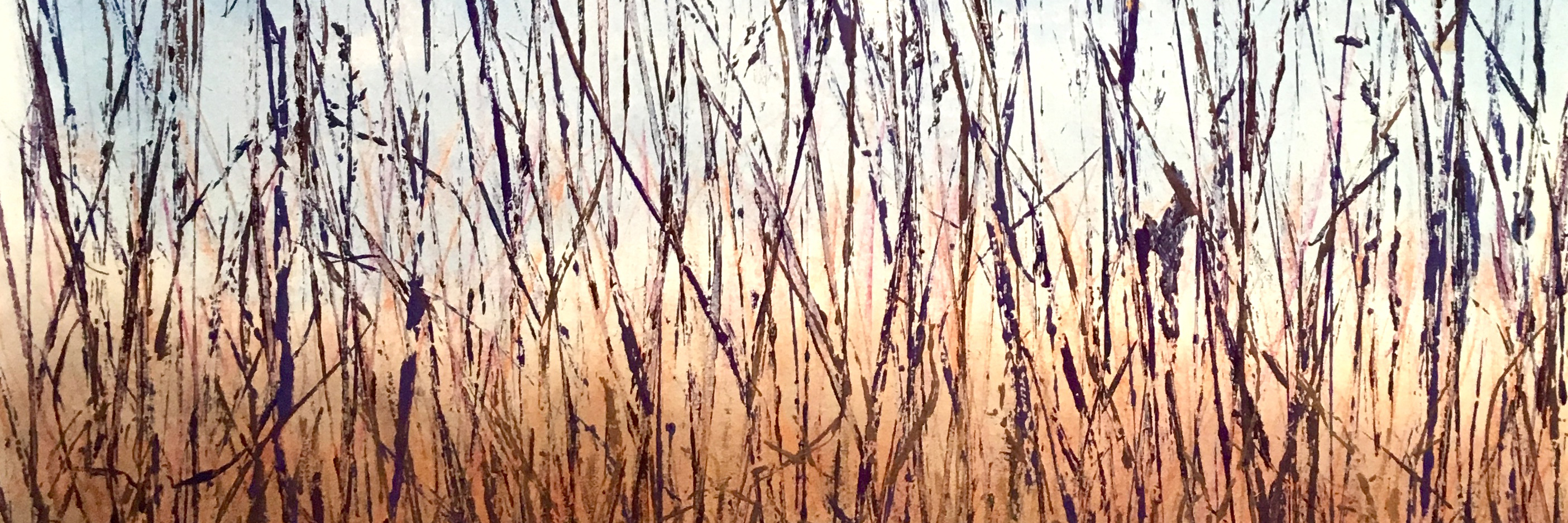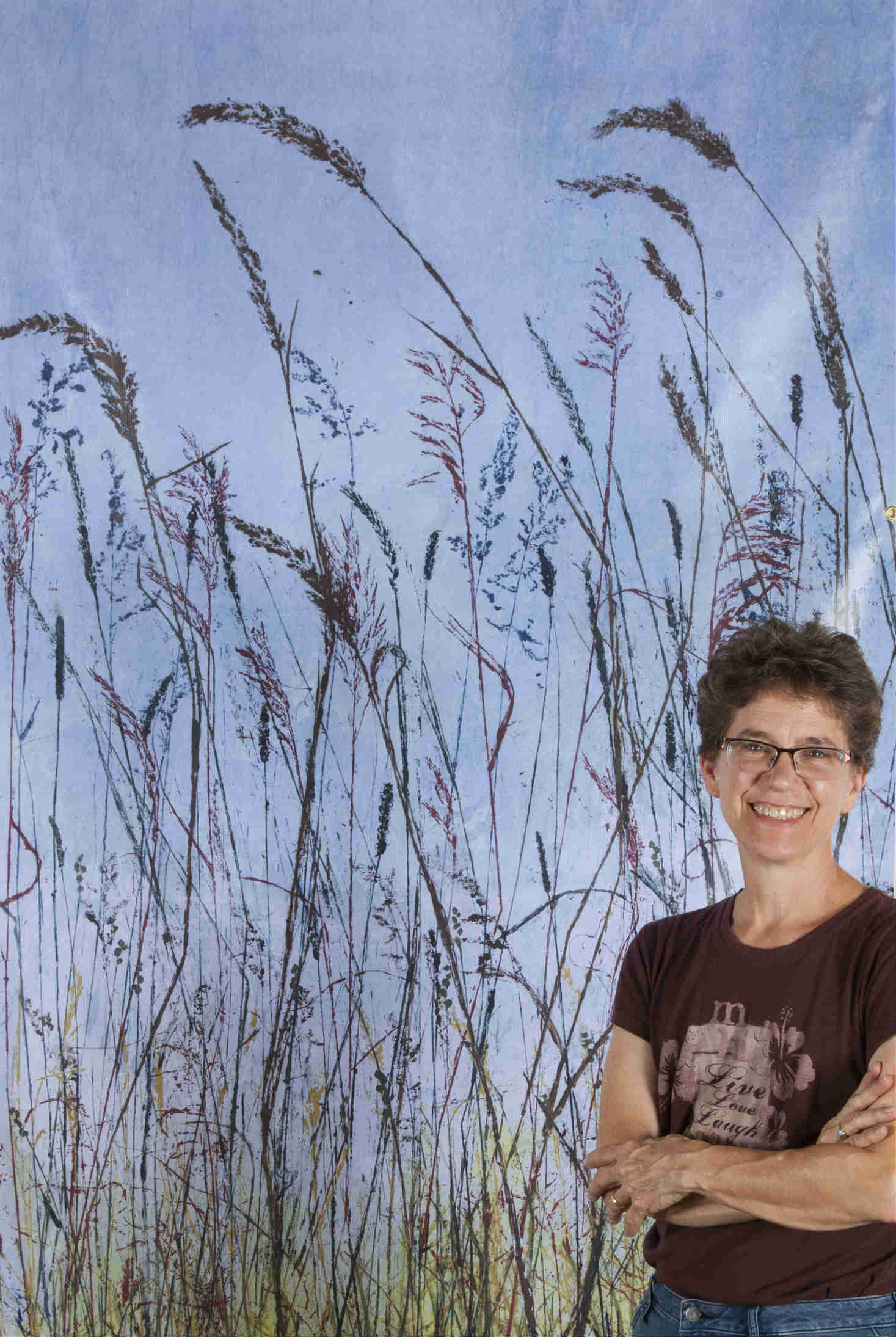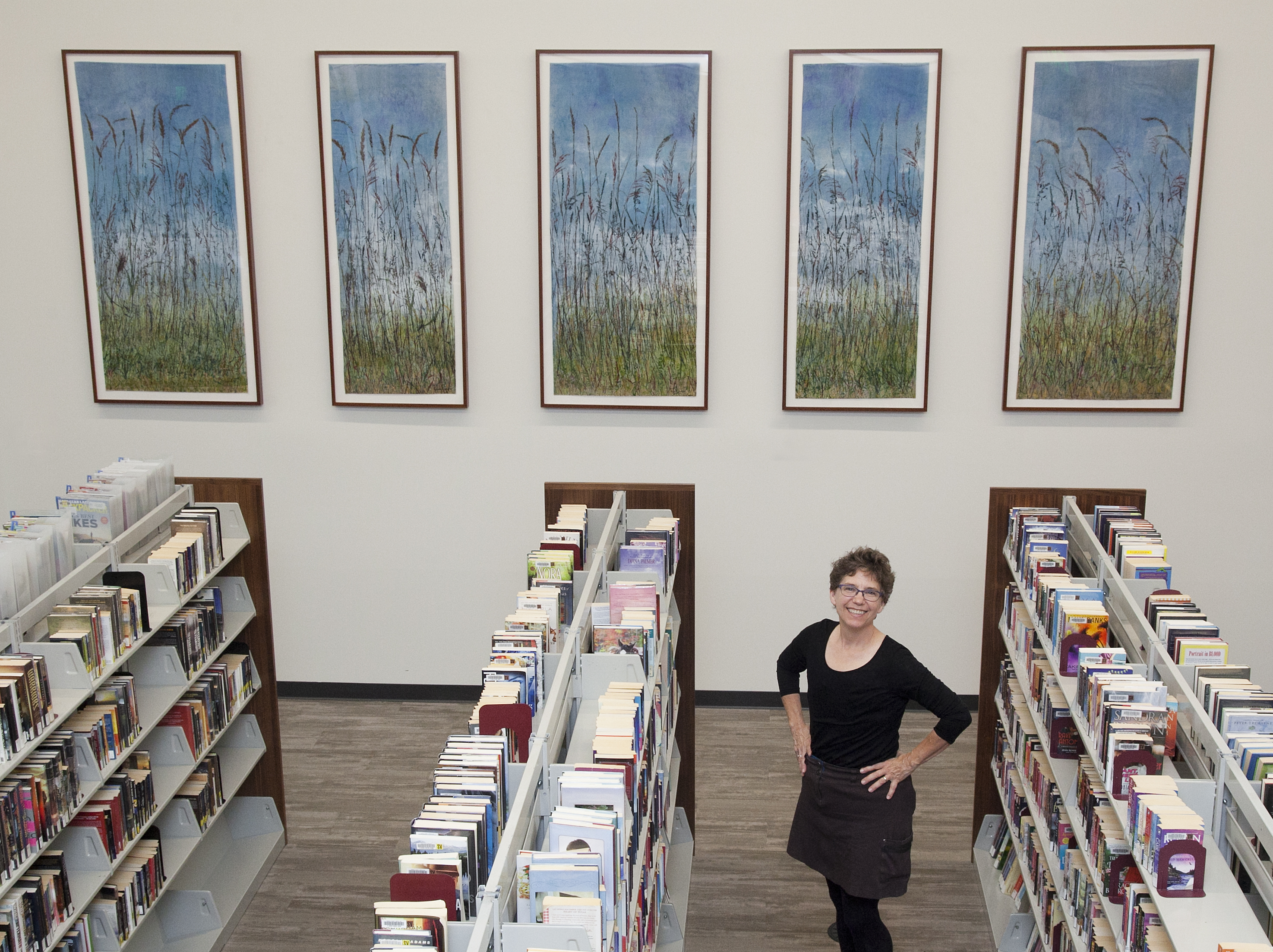
Snouffer with her installation, titled Grass Lake (botanical printmaking on pigment-infused tissue paper, 2017) at the Shoreview Branch Library in Shoreview, MN. It is her largest piece yet, and is named for a nearby prairie
Botanical printmaking speaks to me and it is the heart of my landscape compositions: apply ink to a leaf, lay the inky leaf on a prepared surface, press it onto the surface; remove the leaf to reveal the ink image left behind.
Though leaf printing is an uncomplicated process, the simplicity is made more complex by assimilating other genres into my work. Using fiber arts, water color, acrylic paint, and chalk pastel, I am able to create intricate, multifaceted landscapes on tissue paper, organza, and other textiles.
Grasses are used regularly in my work. There are dozens of native and cultivar species, sizes ranging from a few inches to many feet tall. Striking structural variations in stalks, blades and seed tassels print with remarkable artistic versatility. They can be used to represent cattails, trees on a shoreline, or a wind-blown meadow. The backgrounds of my pieces are a melding of all the skills I learned from teachers and mentors. I use a wide variety of paper and textile surfaces, including tissue, thin mulberry paper, and heavy cotton rag paper. Fabrics include organza (bridal veil material), cotton muslin, linen, and sturdy raw canvas.
All plant images are made by printing the actual plants onto the prepared surfaces. That means to print 36” Bluestem grasses, I need to have a surface that is at least 40-45” long. The biggest piece I have made is “Grass Lake,” commissioned by a local library which has a nearby prairie, affectionately known as Grass Lake. The piece contains prints of several of the grasses, some of which were five feet in length. The rich history and ecological importance of prairies beckon to be told in my art, opening the door to “prairie science meets prairie art.” Exhibition artist talks are about prairie science just as much as my artistic process.
The short Minnesota growing season means time is limited to print with green plants. Winter studio time requires ingenuity and led to developing new print-making techniques. Fiber arts adaptations, chalk pastel enhancements, and acrylic overpainting prints to give texture and definition to winter prints.
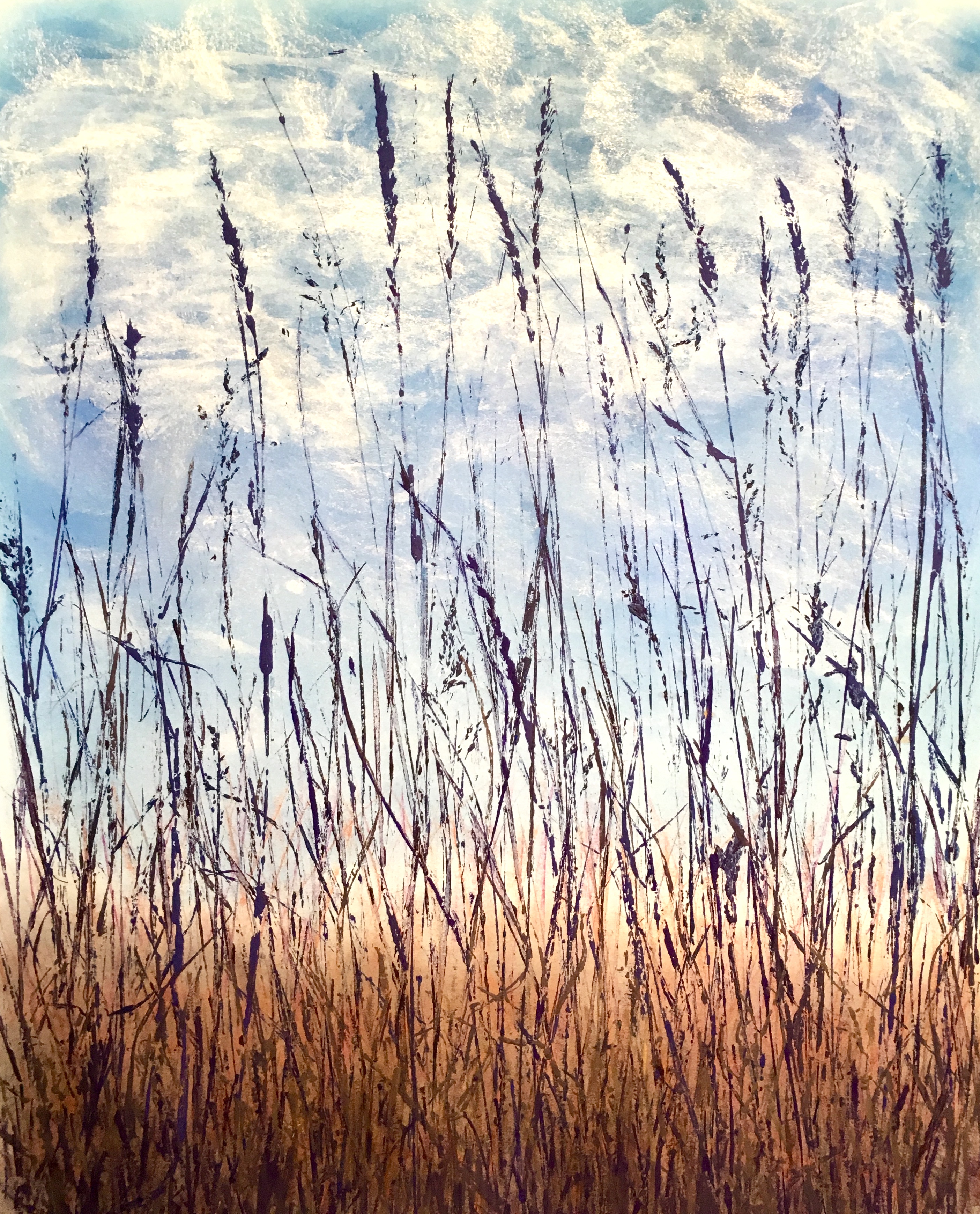
Alley Grass (botanical printmaking on paper with chalk pastel background, 2018)
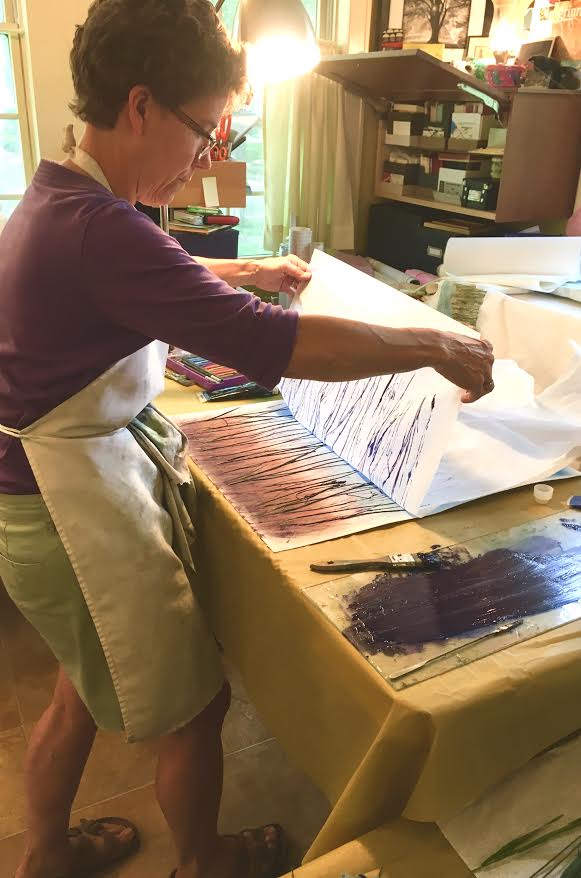
Snouffer at work in her studio
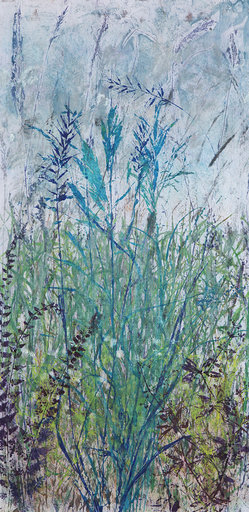
Tanglewood prairie (botanical printmaking on pigment-infused cotton muslin, 2019)
 (CERA) Photograph by Justin Hayworth](https://rootstalk.blob.core.windows.net/rootstalk-2020-spring/grinnell_28528_OBJ.jpg)
Cairn installation, by Andy Goldsworthy, at the Conard Environmental Research Area. (CERA) Photograph by Justin Hayworth
